
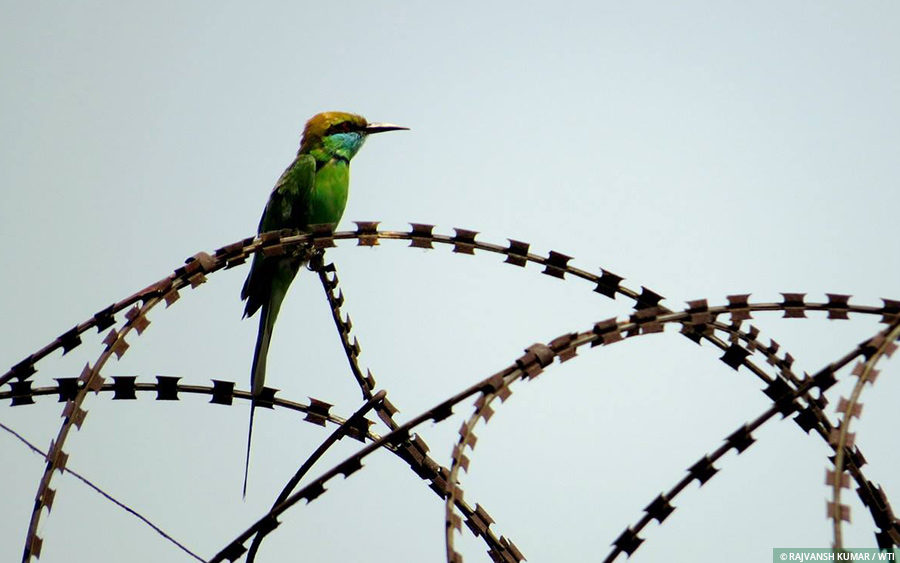 Photo Of The Week
Photo Of The Week
NO FLY ZONE
Rajvansh Kumar found this green bee-eater on a prickly perch during a nilgai rescue at the Indira Gandhi International Airport, New Delhi.
 Photo Of The Week
Photo Of The Week
FROM THE HIMALAYAS TO HAWAII
The kalij pheasant (Lophura leucomelanos) is endemic to the Himalayan foothills of Bangladesh, Bhutan, China, India, Myanmar, Nepal, Pakistan and Thailand. It is also found in the Hawaiian islands in the US, where it was introduced as an exotic. Our colleague Upasana Ganguly didn't have to travel that far afield for this magnificent male, which she photographed in Pangot, Uttarakhand.
 Photo Of The Week
Photo Of The Week
A STUDY IN BLACK AND WHITE
A gaur (Bos gaurus; also known as the Indian bison) peers down at our colleague Amrit Menon in Periyar Tiger Reserve, Kerala. Gaurs are the largest of the wild bovines worldwide, but the effect of their massive size is somewhat diminished by the prissy white socks they wear. (Tell them that at your own peril though, they're known to be a bit touchy.)
 Photo Of The Week
Photo Of The Week
THE QUIET WOLF
A subspecies of grey wolf that ranges from Israel to the Indian subcontinent, the Indian Wolf (Canis lupus pallipes) is smaller than its European cousins. While generally gregarious, it is understood to not associate in packs larger than six to eight individuals. It is also believed to be a rather more silent animal than its cousins.
Indian wolves have been known down the ages for their cunning, speed and endurance. WT Blanford, in Fauna of British India: Mammalia (1888; pg 139) notes that "they have rarely, if ever, been run down and speared from horseback, though the feat has often been attempted"!
This beautiful specimen was photographed by Hivraj Raut, Field Assistant with our Vidarbha Tiger Project, near village Putadi, Navegaon-Nagzira Tiger Reserve corridor, Gondia.
 Photo Of The Week
Photo Of The Week
SIX RHINOS SEE THE SUN
This photograph by our colleague Dr Panjit Basumatary, lead veterinarian at the Centre for Wildlife Rehabilitation and Conservation (CWRC), shows six of the seven rhino calves rescued from the Kaziranga floods this year, now stabilised, enjoying their first moments outdoors in a paddock attached to the centre's Large Animal Nursery. One recently rescued calf, Panjit informs us, remains in an stressed state and is currently under observation in the nursery.
Help us send rescued wildlife #BackToTheWild. Make a donation now!
 Photo Of The Week
Photo Of The Week
WHY DID THE ELEPHANT CROSS THE ROAD?
Because we built one in the middle of its migratory path, that's why! Linear infrastructure elements like roads, railway tracks and canals cause the fragmentation of natural habitats and make life very difficult for nomadic souls like elephants. Here, a herd asserts #RightOfPassage across a jungle road in Dudhwa Tiger Reserve, Uttar Pradesh. Photographed by Dr Aaron Wesly, veterinarian with our Terai Tiger Project.
Learn more about Right of Passage for elephants | Help us keep wildlife #ForeverWild
 Photo Of The Week
Photo Of The Week
CONSTRUCTION CREW
Wire-tailed swallows (Hirundo smithii) collect wet mud in their beaks to build their nests, which are commonly located on cliff ledges, under bridges or on buildings. The insides of their neat, half-bowl nests are then lined with feathers. Photographed here by our colleague Anil Kumar near Nawegaon National Park, Gondia.
 Photo Of The Week
Photo Of The Week
ONE AMONG 101
A herd of elephants asserts #RightOfPassage through the Kalapahar-Daigrung Elephant Corridor in the Karbi Anglong Hills of Assam. One of the #101Corridors mapped across India, this vital habitat link allows elephants to move between Kaziranga National Park and the Nambor-Daigrung Wildlife Sanctuary in the larger landscape. It was secured last year by Wildlife Trust of India in partnership with Elephant Family, JTEF, IUCN Netherlands, the Karbi Anglong Autonomous Council, and the Assam Forest Department.
The Right of Passage Project | Help us keep wildlife #ForeverWild
 Photo Of The Week
Photo Of The Week
DEATH FROM ABOVE
Fairly widespread in South Asia, the white-eyed buzzard (Butastur teesa) is a medium-sized raptor that can usually be seen soaring on thermals, searching for insects and small vertebrates. It is also capable of taking down larger prey such as black-naped hares. This fine specimen was photographed by Dr Mayukh Chatterjee at Tipeshwar Wildlife Sanctuary, Maharashtra.
 Photo Of The Week
Photo Of The Week
BIG CAT, SPOTTED
Camouflage and adaptability are the keys to the common leopard’s success as a stealth predator across varied habitats in India. Both are in evidence in this photograph, taken by our colleague Abhijeet Sanjay Bayani, of a female leopard that had taken up residence with her two cubs in a scrap yard in Brahmapuri Forest Division, Maharashtra.
 Photo Of The Week
Photo Of The Week
THEREIN HANGS A TAIL
What do you do when you're in the middle of the forest and your vehicle breaks down? Spend three glorious hours watching the elephants at breakfast, as our colleague Sahil Choksi did in the Chilla range of Rajaji Tiger Reserve, Uttarakhand.
Help us keep wildlife #ForeverWild
Here's how we're securing #RightOfPassage for India's wild elephants
 Photo Of The Week
Photo Of The Week
A VIEW TO A KILL
A female leopard with her prey, a gray langur. Photographed by our colleague Nikhil Dandekar near Jamdi village in the Nagzira-Navegaon tiger corridor, Gondia, Maharasthra.
 Photo Of The Week
Photo Of The Week
PERCHED PARADISE
The Asian Paradise Flycatcher (Terpsiphone paradisi), a medium sized insectivorous bird, stands out even in dense forest foliage due its elegant long streamers. Only males have these tails, which flutter around gracefully as the birds make short-burst flights to catch insects mid-air. Adult males will acquire a white plumage to go with the black head and crest at about three years. Sub-adults have a darker brown colour, like this individual photographed by Dr Mayukh Chatterjee at the Ikara Rest house, South Brahmapuri Forest Division, Vidharba.
 Photo Of The Week
Photo Of The Week
HAPPY BIRD DAY!
Tomorrow is International Migratory Bird Day, annually held on the second weekend of May to highlight the need to protect migratory birds and their habitats. The two birds seen here are both long-distance migrants, rarities in the Indian subcontinent. On the left is the Greater White-fronted Goose (Anser albifrons), which breeds across the tundra from Nunavut to Siberia, across Russia, and in Greenland, and has one of the largest ranges of any goose species in the world. On the right is the Lesser White-fronted Goose (Anser erythropus), listed as Vulnerable because of a rapid population reduction in its key breeding population in Russia. Photographed by our colleague Arpit Deomurari in Little Rann of Kutch, Gujarat.
 Photo Of The Week
Photo Of The Week
WHO'S THE BOS?
Elephant corridors don't just provide uninterrupted access between fragmented forest patches to elephants, you know. Here, a gaur (Bos gaurus; also known as the Indian bison; the largest of the wild bovines worldwide) enjoys #RightOfPassage through the erstwhile village of Puliyankolly, now part of the critical natural habitat linkage that is the Thirunelli-Kudrakote elephant corridor, which we helped secure in 2011. Photographed at close quarters by our colleague Shajan Muthanga in North Wayanad Division, Kerala.
More about elephant corridors | Help us keep wildlife #ForeverWild
 Photo Of The Week
Photo Of The Week
CONFLICT OR COEXISTENCE?
Captured by our colleague Abhijeet Sanjay Bayani near Khutwanda village on the fringes of Tadoba Andhari Tiger Reserve, this is an image most apposite for our times, when the tide of conflict between humans and big cats continues to inexorably rise. The olden Indian tolerance of man for beast is gone; tigers today need as much protection from ordinary folks as they do from hunters and poachers. Perhaps if we walked that metaphorical mile in the their pugmarks, we might realise that it is our devastation of their wild lands that forces them onto human-use areas. Perhaps from that wellspring of understanding, coexistence instead of conflict may flow.
 Photo Of The Week
Photo Of The Week
THE FLYING SNAKE THAT DOESN’T
Contrary to its name, Chrysopelea ornata, the Ornate Flying Snake, doesn’t really fly. It can flatten out its lightweight body, launch itself off treetops and glide short distances though, usually as an anti-predator strategy. Also interesting, this is an opisthoglyphous species, which means it has fangs at the rear, not the front of its mouth. Threats include habitat loss, killing due to misidentification and the illegal pet trade. Our colleague Dr Mayukh Chatterjee saw this one in Bandipur Tiger Reserve.
 Photo Of The Week
Photo Of The Week
A LADY DOES THE FOXTROT
The smallest and lightest of the three Red Fox subspecies found in India, the Desert Fox (Vulpes vulpes pusilla) is also distinguishable by its white feet, which lend it the additional appellation of White-footed Fox. The white tail-tip is found on all three subspecies and is a simple way of telling them apart from the more common Indian or Bengal Fox. Our colleague Arpit Deomurari found this fine female specimen trotting over the surface of the Little Rann of Kutch.
 Photo Of The Week
Photo Of The Week
ROLE REVERSAL
Eternal vigilance is the lot of the tiger mom, the price indeed of motherhood in a jungle environment. This tigress, photographed by our colleague Gaurav Barhodiya in Bandhavgarh Tiger Reserve, gets a moment’s respite under the watchful eyes of her brood.
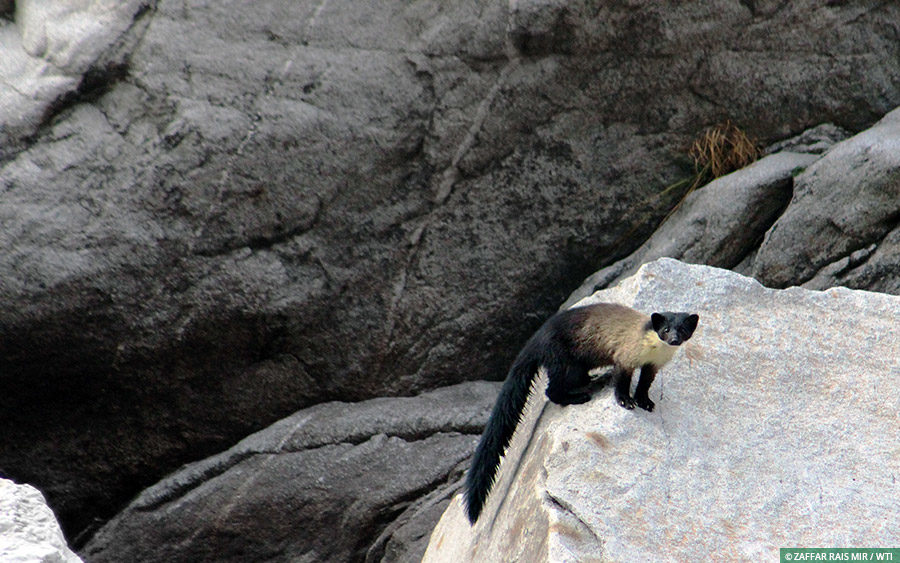 Photo Of The Week
Photo Of The Week
BRIGHT, BOLD AND STINKY
Agile, fearless and able to produce a most unpleasant odour from its hindquarters when threatened, the yellow-throated marten has few natural predators. This one confronted Zaffar Rais Mir in Kazinag National Park, J&K.
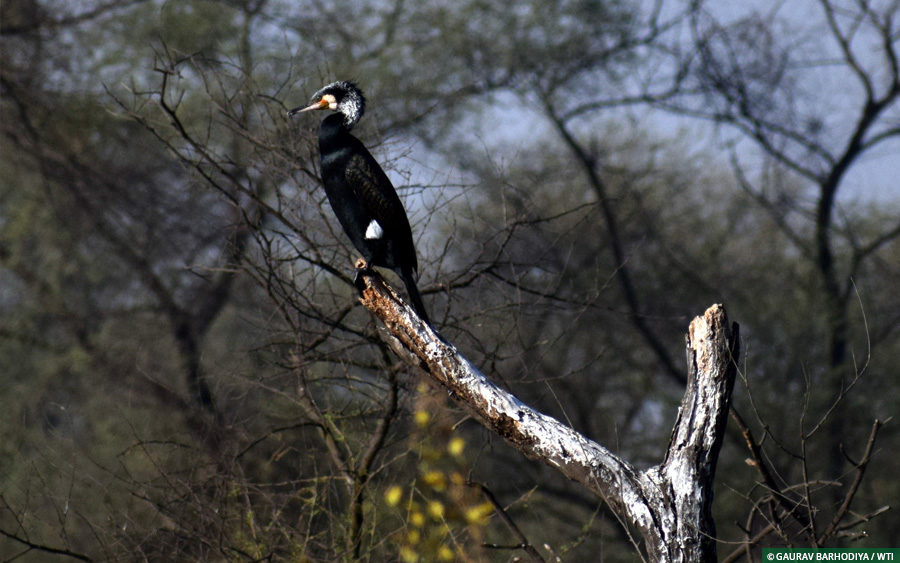 Photo Of The Week
Photo Of The Week
THE FISHER KING
The great cormorant has been admired and reviled (and in some cultures, employed) through history for its splendid fishing abilities. Gaurav Barhodiya spotted this one at Keoladeo National Park, Rajasthan.
 Photo Of The Week
Photo Of The Week
EAST COAST ARRIVALS
Rudra Prasanna Mahapatra captures the comings and goings of olive ridley sea turtles during the arribada, in terms of sheer numbers the greatest wildlife show in India, at Rushikulya beach, Odisha.
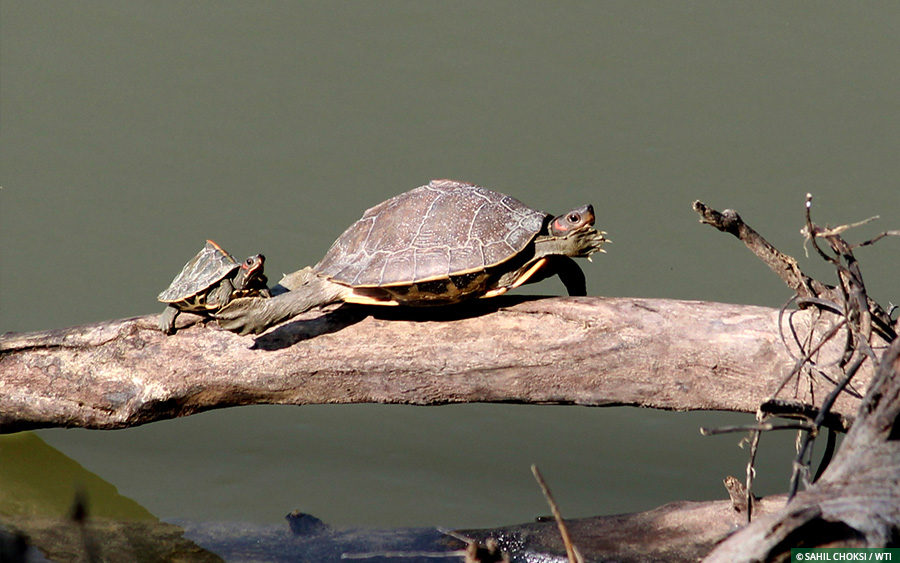 Photo Of The Week
Photo Of The Week
OUT ON A LIMB
Besieged by habitat destruction, the illegal pet trade and the local consumption of its meat and eggs, the Assam roofed turtle is classified as endangered. Sahil Choksi spotted these rare specimens near a creek in Kaziranga.
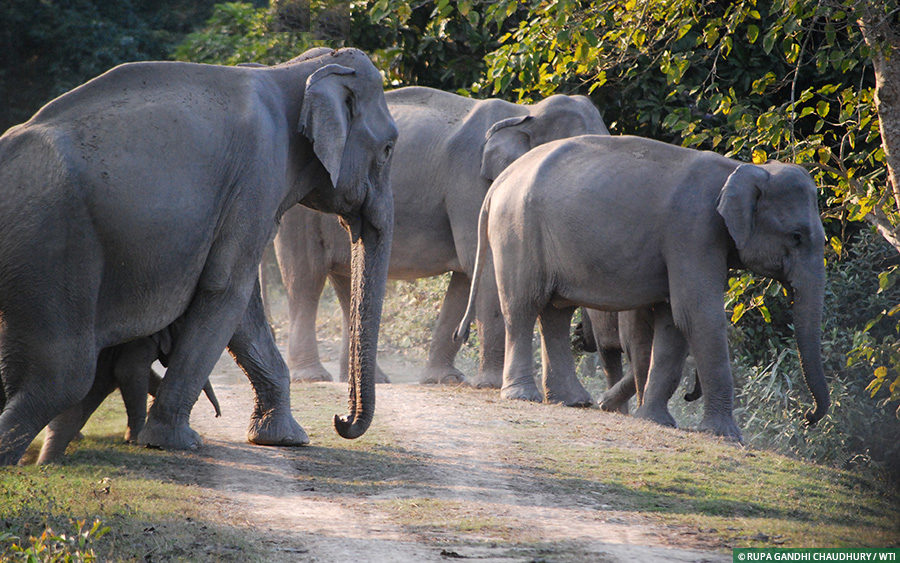 Photo Of The Week
Photo Of The Week
A VERY ELEPHANT CROSSING
A herd of elephants asserts #RightOfPassage across a jungle jeep trail, protecting two calves in its midst. Photographed in Kaziranga National Park by Rupa Gandhi Chaudhury.
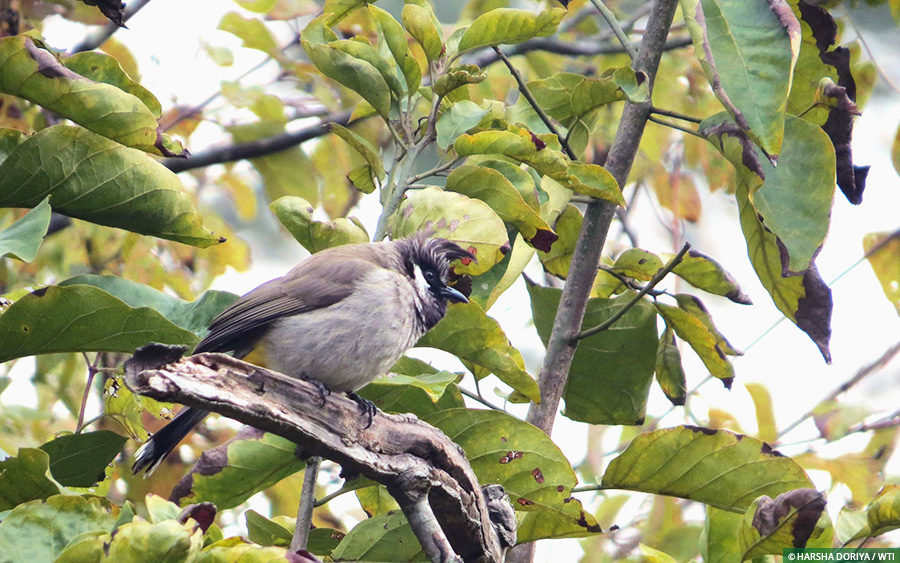 Photo Of The Week
Photo Of The Week
LIQUID SONG, STYLISH 'DO
The Himalayan bulbul is known by its bubbly song, bright white cheeks, yellow undertail coverts and a sweeping dark crest that always looks like it's just been styled. Harsha Doriya spotted this one in Corbett National Park.
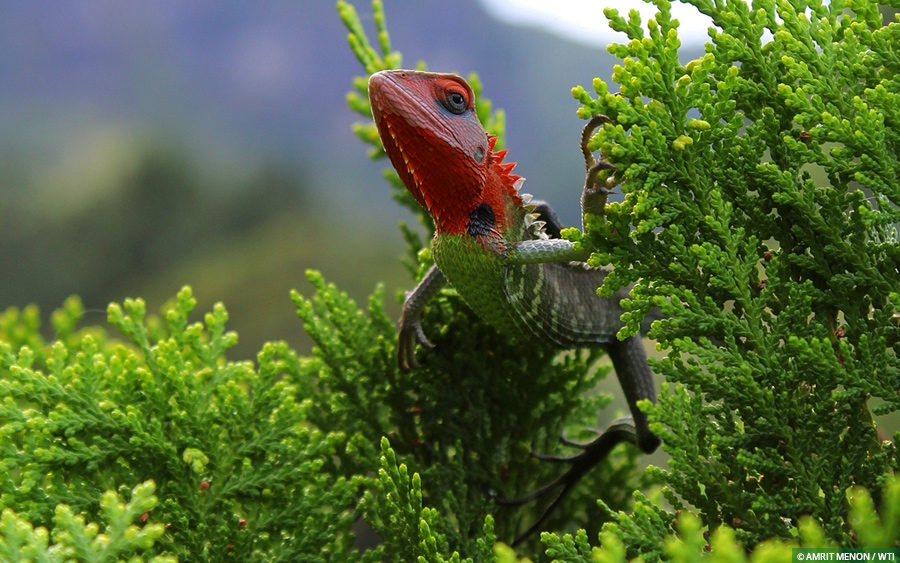 Photo Of The Week
Photo Of The Week
COLOURFUL LANGUAGE
'You wouldn't like me when I'm angry', this common green forest lizard warned one of his conspecifics, his head turning red at the other's proximity. Amrit Menon witnessed the exchange en route to Nuwara Eliya in Sri Lanka.
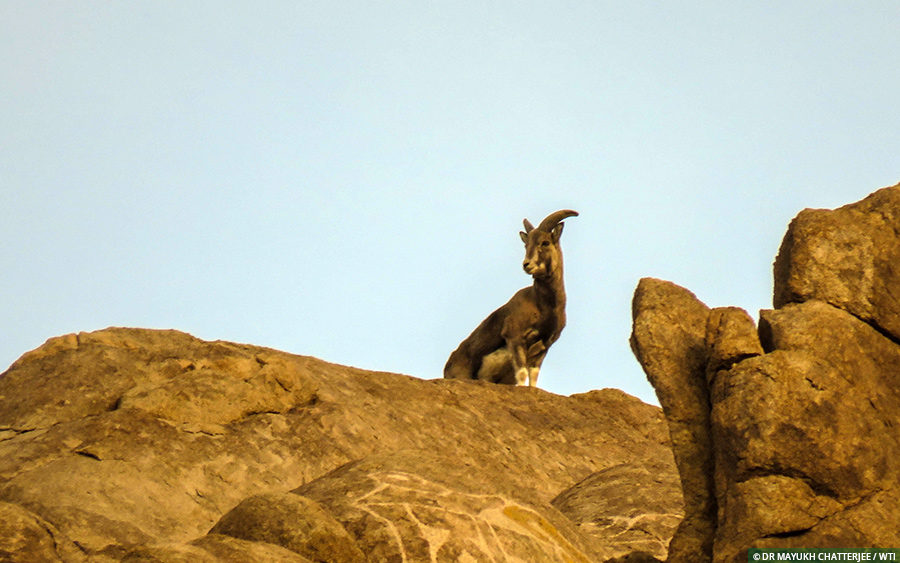 Photo Of The Week
Photo Of The Week
LIVING ON THE EDGE
A New Year’s day photograph of the uncommon Ladakh Urial, taken by Dr Mayukh Chatterjee near the Shey monastery outside Leh town
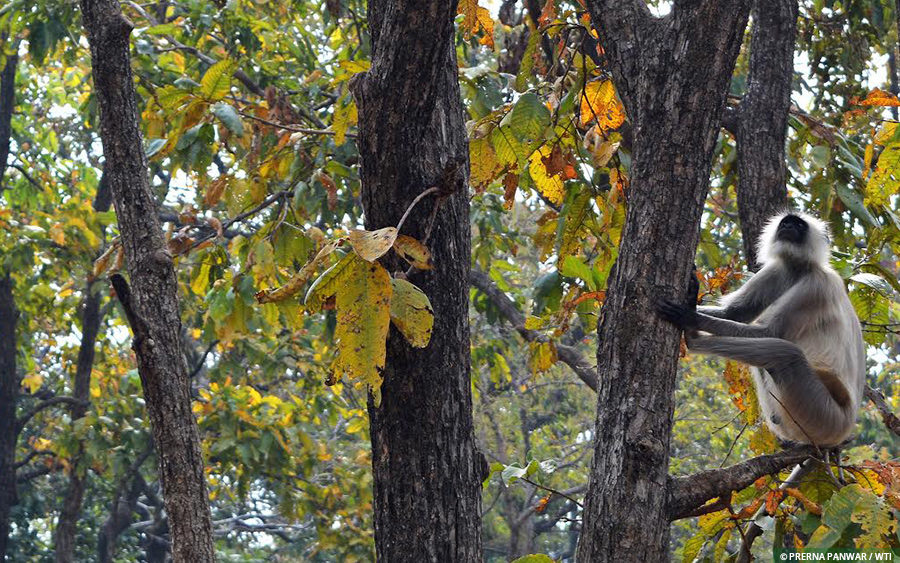 Photo Of The Week
Photo Of The Week
IN LIEU OF PINK ELEPHANTS
A gray langur, photographed by Prerna Panwar in Satpura TR. After your bright-hued hallucinations have had their night, may you awake in the New Year agile and blessed with canopies to climb to and limbs to be out on.
Central India Tiger Habitat Securement Project | Help us keep wildlife #ForeverWild
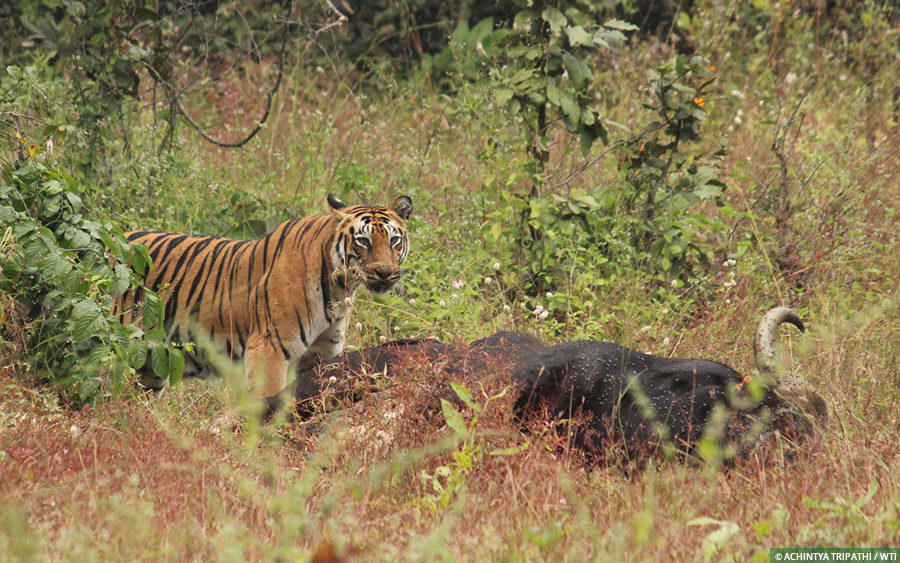 Photo Of The Week
Photo Of The Week
A ROYAL REPAST
Achintya Tripathi happened upon this royal feast at Tadoba Andhari Tiger Reserve. As he waited and watched, this tigress, a full-grown tiger, and a cub all came up to the slain gaur by turn and had their fill.
Central India Tiger Habitat Securement Project | Help us keep wildlife #ForeverWild
 Photo Of The Week
Photo Of The Week
NO FLY ZONE
Rajvansh Kumar found this green bee-eater on a prickly perch during a nilgai rescue at the Indira Gandhi International Airport, New Delhi.
 Photo Of The Week
Photo Of The Week
FROM THE HIMALAYAS TO HAWAII
The kalij pheasant (Lophura leucomelanos) is endemic to the Himalayan foothills of Bangladesh, Bhutan, China, India, Myanmar, Nepal, Pakistan and Thailand. It is also found in the Hawaiian islands in the US, where it was introduced as an exotic. Our colleague Upasana Ganguly didn't have to travel that far afield for this magnificent male, which she photographed in Pangot, Uttarakhand.
